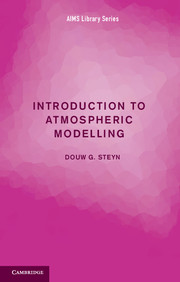
- Cited by 1
-
Cited byCrossref Citations
This Book has been cited by the following publications. This list is generated based on data provided by Crossref.
Al-Dabbagh, Sama K. Almusawi, Vian and Alknani, Basim Abdulsada 2023. Verification of Some Weather Elements Forecasts from BSC-DREAM8b V2 Model. IOP Conference Series: Earth and Environmental Science, Vol. 1223, Issue. 1, p. 012008.
- Publisher:
- Cambridge University Press
- Online publication date:
- April 2015
- Print publication year:
- 2015
- Online ISBN:
- 9781316182482


